Home » Rocks » Oil Shale » Australia
Australia Oil-Shale Deposits
Reprint of: United States Geological Survey Scientific Investigations Report 2005-5294
By John R. Dyni
| Australia Oil Shale |
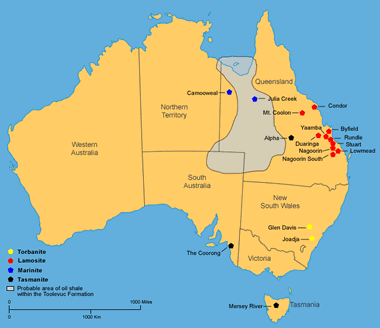
Map of oil shale deposits in Australia (locations after Crisp and others, 1987; and, Cook and Sherwood 1989). Click to enlarge map.
The oil-shale deposits of Australia range from small and noneconomic to deposits large enough for commercial development. The "demonstrated" oil-shale resources of Australia total 58 billion tons, from which about 3.1 billion tons of oil (24 billion barrels) is recoverable (Crisp and others, 1987, p. 1).
Australian oil-shale deposits range in age from Cambrian to Tertiary and are diverse in origin. The deposits are located in the eastern one-third of the country, including Queensland, New South Wales, South Australia, Victoria, and Tasmania. The deposits having the best potential for economic development are those located in Queensland and include the lacustrine Rundle, Stuart, and Condor deposits of Tertiary age. The marine Toolebuc oil shale of Early Cretaceous age occupies a large area mostly in Queensland. The torbanite deposits at Joadja Creek and Glen Davis in New South Wales and the tasmanite deposits in Tasmania were mined for shale oil in the last half of the 1800s and into the early 1900s. The remaining resources of these high-grade deposits are not commercially important (Alfredson, 1985, p. 162). Some of the colorful history of the oil-shale operations at Joadja Creek is described by Knapman (1988). Glen Davis, which closed in 1952, was the last oil-shale operation in Australia until the Stuart Project began operations in the late 1990s. About 4 million tons of oil shale were mined in Australia between 1860 and 1952 (Crisp and others, 1987, their fig. 2).
Torbanite
Much of the early production of oil shale in Australia was from the torbanite deposits of New South Wales. As many as 16 deposits were exploited between the 1860s and 1960s. During the early years of mining, torbanite was used for gas enrichment in Australia and overseas, but paraffin, kerosene, and wood preserving and lubricating oils were also produced. Later, in the 1900s, torbanite was used to produce gasoline. Although the torbanite assayed as high as 480 to 600 l/t, the average feed to the retort was probably about 220 to 250 l/t. Of 30 deposits in New South Wales, 16 were commercially exploited (Crisp and others, 1987, p. 6).
Two small deposits of torbanite have been investigated in Queensland. These include the small but high-grade Alpha deposit, which constitutes a potential in-situ resource of 19 million U.S. barrels (Noon, 1984, p. 4) and a smaller deposit at Carnarvon Creek.
| Oil Shale - Country Menu |
Tasmanite
Several companies attempted to develop the marine tasmanite deposits of Permian age in Tasmania during the early 1900s. Between 1910 and 1932, a total of 1,100 m3 (about 7,600 barrels) of shale oil was produced from several intermittent operations. Further developments are unlikely unless new resources are found (Crisp and others, 1987, p. 7-8).
Toolebuc Oil Shale
Oil shale in the marine Toolebuc Formation of Early Cretaceous age underlies about 484,000 km2 in parts of the Eromanga and Carpenteria Basins in Queensland and adjacent States. The oil-shale zone ranges from 6.5 to 7.5 m in thickness but yields on average only about 37 l/t, making it a low-grade resource. However, the Toolebuc Formation is estimated to contain 245 billion m3 (~1.7 trillion barrels) of in-situ shale oil. Excluding weathered oil shale from the surface to a depth of 50 m, about 20 percent (49 billion m3 or 340 billion barrels) of the shale-oil resource between the depths of 50 to 200 m could be produced by open-pit mining (Ozimic and Saxby, 1983, p. 1). The oil shale also contains potential resources of uranium and vanadium. One of the more favorable localities for oil-shale development is near Julia Creek, where the Toolebuc oil shale is near the surface and is amenable to open-pit mining. The resources of shale oil in the Toolebuc Formation suitable for open-pit mining total 1.5 billion U.S. barrels, but the oil shale is too low grade for development at present (Noon, 1984, p. 5).
The organic matter of the Toolebuc oil shale is composed largely of bituminite, liptodetrinite, and lamalginite (Hutton, 1988, p. 210; Sherwood and Cook, 1983, p. 36). The atomic hydrogen to carbon (H/C) ratio of the organic matter is about 1.1 ±0.2 with high aromaticity (>50 percent). Only 25 percent of the organic matter converts to oil by conventional retorting (Ozimic and Saxby, 1983).
Eastern Queensland
As a result of the increase in the price of crude oil related to the oil crisis of 1973-74, exploration for oil shale in Australia was greatly accelerated. Several companies identified or confirmed sizable resources of oil shale at Rundle, Condor, Duaringa, Stuart, Byfield, Mt. Coolon, Nagoorin, and Yaamba in eastern Queensland during the late 1970s and early 1980s. However, by 1986, the prices of crude oil dropped dramatically, and interest in the exploitation of oil shale diminished (Crisp and others, 1987, p. 9).
Nine Tertiary oil-shale deposits in eastern Queensland have been investigated by exploratory core drilling - Byfield, Condor, Duaringa, Lowmead, Nagoorin, Nagoorin South, Rundle, Stuart, and Yaamba. Most of these deposits are lamosites that were deposited in freshwater lakes located in grabens, commonly in association with coal-forming swamps.
The mineral fraction is typically composed of quartz and clay minerals with lesser amounts of siderite, carbonate minerals, and pyrite. The sizes of the deposits range from 1 to 17.4 billion tons of in-situ shale oil with cutoff grades of around 50 l/t. Three of the largest deposits are Condor (17.4 billion tons), Nagoorin (6.3 billion tons), and Rundle (5.0 billion tons) (Crisp and others, 1987).
The Stuart oil-shale deposit, estimated to contain 3 billion barrels of in-situ shale oil, is under development by the Southern Pacific Petroleum (SPP) and Central Pacific Minerals (CPM) companies. As of February 2003, 1.16 million tons of oil shale were mined by open pit from which 702,000 barrels of shale oil were recovered by the Taciuk retorting process. Shale-oil production runs during 87 days of operation from September 20, 2003, to January 19, 2004, peaked at 3,700 barrels per day and averaged 3,083 barrels per day (SSP/CPM Dec. 2003 Quarterly Report, January 21, 2004). The Stuart operation shut down in October 2004 for further evaluation.
| More Oil |
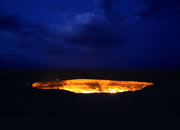 |
The Doorway to Hell |
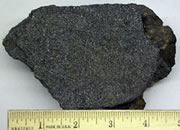 |
Oil Sands |
 |
Shale Gas Resources |
 |
Gifts That Rock |
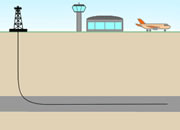 |
Horizontal Drilling |
 |
Oil and Gas Rights |
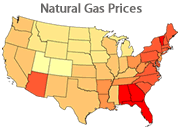 |
Natural Gas Prices |
 |
Oil Shale |

Find Other Topics on Geology.com:

|

| ||

|

| ||

|

| ||

|

|
